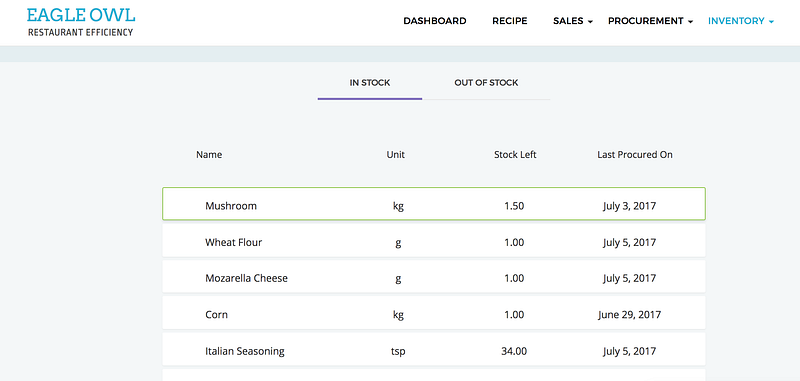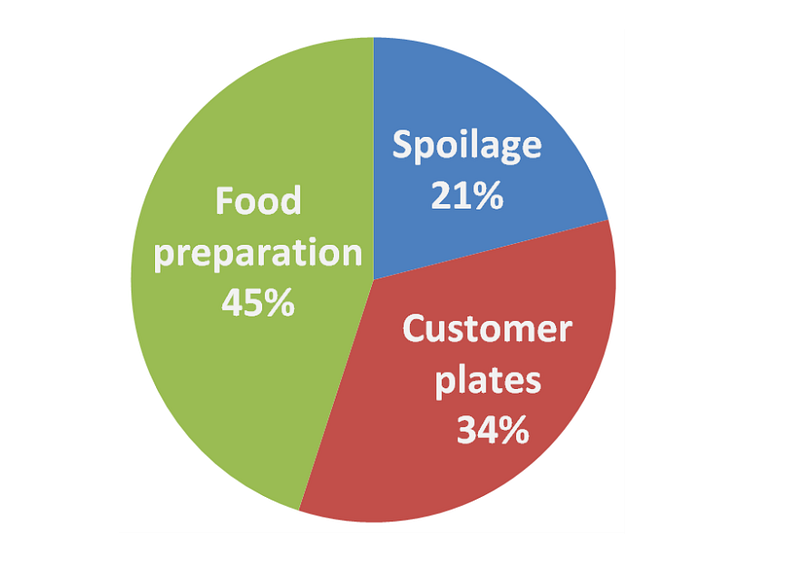A while ago, we announced the launch of EagleOwl, a restaurant management platform. Our previous post covered a bit of history.
It was a great moment for our fledgling company, something we are very proud of. We took a lot more time than we had planned for, but all that pain and frustration has now given way to relief, optimism, and hope. Congrats to the entire team for having pitched in with invaluable contributions.
We quickly started a pilot with a few customers (well technically they are prospects). The product was released with the recipe, inventory, sales import, and procurement modules along with a few sub-modules — which are bare essentials for a food costing and inventory management solution. We strongly felt that this was sufficient to go to market, collect user feedback and learn.

Meanwhile, we kept stabilizing the platform whilst adding few features we had put on hold. Would like to share what has happened since then, what feedback our pilot users have given us, their wish list, and how it shaped our development priorities. Below are few requirements from our users that we built this week and why.
Balance Inventory
Everyone wanted to know how much stock they are likely to have in their kitchen on a daily basis. For any given day/time, this can easily be derived based on the last physical stock count plus the purchases made minus expected consumption linked to sales. With this, they can then easily plan their purchase and also know which items are running low in the store.
This can be improvised by adding re-order levels for SKU’s such that alarms are raised whenever the SKU drops below a predefined threshold set by the user. We are yet to do this. As a matter of fact, since we now know how much of each SKU is consumed per week and how often it is purchased, we should be able to automatically detect re-order levels and intimate the purchase manager. And if we factor in the replenishment lead time, it becomes even more interesting.

Why is this important?
In most restaurants procurement is a big headache, you will always run short of some items due to various reasons — supply shock, delivery issues & traffic (if Bangalore), labor, bad quality, memory loss, etc. Whatever the reason may be, you are now in trouble. You then quickly need to arrange for items from a nearby market/supermarket at much higher rates than usual. This will straightaway dent your margins. Maintaining PAR inventory levels is the goal of every restaurant manager and they usually decide this based on forecast or past trends.
Essentially this means maintaining the optimal amount of inventory at any given time to meet the demands. If you stock less you have an issue of lost sales opportunities, unhappy guests, and a crestfallen purchase manager. Stocking more will lead to losses — spoilage, theft, expiry, overcrowded store, and opportunity costs. How much inventory you need to hold is another crucial element that needs to be scientifically arrived at. We will cover that in another blog.
Operational Expenses
These are fixed (well not completely) expenses for any restaurant — rent, electricity, internet, telephony, water, gas, labor (not in the USA as they also employ on a contractual basis per hour), pest control, housekeeping, transport, promotions, property taxes, etc.
Our software tracks your food cost (COGS), the only other thing we need to calculate your profit margin is to book keep your operational costs. Though this was planned as a feature to do, we had parked it by the side for other improvements we had prioritized. But our pilot customers started asking for this within a few days.
Though OpEx is taken as a fixed cost, technically few parts of it aren’t. For e.g. your water, gas, or electricity usage could be proportional to your sales. What if your gas bills increased when sales dipped? Why did that happen? Is your napkin usage proportionate with sales?
In advanced economies where labor is expensive, it is again partly proportionate with sales and forms the bulk of the expenses for a restaurant (33–35%). If we start collecting this information for a few months, it would then be possible to correlate by studying the patterns.
Plan for the upcoming week
Sprucing up variance reports with actionable insights — this is the key for efficient operations. One can do every mistake or mischief, but this will highlight the possible root causes and actions to be taken (there are only a few).

Wastage — one of the key components but overlooked and under-analyzed by most restaurants. This is a huge topic in itself and deserves more attention, will cover in our next post. The first step here is to measure and monitor.
How much is enough?
One is always concerned if you have just that minimum set of features to go to the market. Your mind is always left wondering — will they like it, have we done enough to solve their problem, will they turn their backs?
We have met 7 different restaurants (cloud, multi-chain, standalone) so far and the feedback has been very encouraging. During our demo, we honestly conveyed whatever was missing and what is being done; they were more than happy to hear that. None were finicky about what was missing. Well, you will be left guessing till you go and meet them, understand what they are looking to solve. So I am sure “getting out of the building” helped — thank you Steve Blank.
